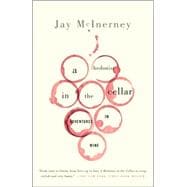
What is included with this book?
| Introduction | p. XIII |
| Foreplay | |
| My Favorite White | p. 3 |
| Friulis Favorite Son: Tocai Friulano | p. 7 |
| Thin Is In: The New Wave of California Chardonnays | p. 11 |
| The Whites of the Andes | p. 15 |
| The Forgotten Whites of Bordeaux | p. 19 |
| No Respect: Soave | p. 23 |
| Gray Is the New White: Pinot Gris | p. 27 |
| Translating German Labels | p. 31 |
| "All Wine Wishes It Could Be Red" | |
| The Shedistas of Santa Barbara | p. 37 |
| The Roasted Slope of the Rhone | p. 41 |
| The House Red of the Montagues and the Capulets | p. 46 |
| "An Extreme, Emotional Wine": Amarone | p. 50 |
| Cape Crusaders: South African Reds | p. 54 |
| The Black Wine of Cahors | p. 58 |
| Major Barbera | p. 62 |
| Go Ask Alice: The Dark Secret of Bandol | p. 66 |
| The Spicy Reds of Chile | p. 70 |
| Malbec Rising | p. 74 |
| Personality Test: Julia's Vineyard | p. 78 |
| How to Impress Your Sommelier | |
| How to Impress Your Sommelier, Part One: German Riesling | p. 85 |
| No More Sweet Talk, or How to Impress Your Sommelier, Part Two: Austrian Riesling | p. 89 |
| The Semi-Obscure Treasures of Alsace | p. 93 |
| The Discreet Charms of Old-Style Rioja | p. 97 |
| The Mysterious Beauty of Sagrantino di Montefalco | p. 101 |
| Lovers, Fighters, and Other Obsessives | |
| Oedipus at Hermitage: Michel Chapoutier | p. 107 |
| Ghetto Boys: Greg Brewer and Steve Clifton Get Radical | p. 111 |
| Jilted Lover: Auberon Waugh | p. 115 |
| The Obsessive: Remirez de Ganuza | p. 119 |
| Berkeley's French Ambassador: Kermit Lynch | p. 123 |
| The Mad Scientist of Jadot | p. 127 |
| Voice in the Wilderness: Willy Frank and the Finger Lakes | p. 131 |
| Finessing the Fruit Bombs | p. 135 |
| Mountain Men: The Smith Brothers of Smith-Madrone | p. 139 |
| Do the Brits Taste Differently? Michael Broadbent and Jancis Robinson | p. 143 |
| Robert Mondavi's Bizarro Twin: The Passions and Puns of Randall Grahm | p. 147 |
| Expensive Dates | |
| First Among Firsts? The Glories of Cheval-Blanc | p. 153 |
| The Name's Bond | p. 158 |
| "A Good and Most Perticular Taste": Haut-Brion | p. 162 |
| The Maserati of Champagne | p. 166 |
| Bacchanalian Dreambook: The Wine List at La Tour d'Argent | p. 170 |
| Matches Made in Heaven | |
| Fish Stories from Le Bernardin | p. 177 |
| What to Drink with Chocolate | p. 181 |
| Provencal Pink | p. 185 |
| Odd Couples: What to Drink with Asian Food | p. 189 |
| Bin Ends | |
| Baby Jesus in Velvet Pants: Bouchard and Burgundy | p. 195 |
| Strictly Kosher | p. 199 |
| Body and Soil | p. 203 |
| New Zealand's Second Act | p. 208 |
| Bubbles and Spirits | |
| Number Two and Bitching Louder: Armagnac | p. 215 |
| White on White: Blanc de Blancs Champagne | p. 219 |
| Monk Business: The Secrets of Chartreuse | p. 223 |
| Tiny Bubbles: Artisanal Champagnes | p. 227 |
| The Wild Green Fairy: Absinthe | p. 231 |
| Epilogue: What I Drank on My Forty-eighth Birthday | p. 337 |
| Selected Bibliography | p. 241 |
| Table of Contents provided by Ingram. All Rights Reserved. |
The New copy of this book will include any supplemental materials advertised. Please check the title of the book to determine if it should include any access cards, study guides, lab manuals, CDs, etc.
The Used, Rental and eBook copies of this book are not guaranteed to include any supplemental materials. Typically, only the book itself is included. This is true even if the title states it includes any access cards, study guides, lab manuals, CDs, etc.
Excerpted from A Hedonist in the Cellar: Adventures in Wine by Jay McInerney
All rights reserved by the original copyright owners. Excerpts are provided for display purposes only and may not be reproduced, reprinted or distributed without the written permission of the publisher.